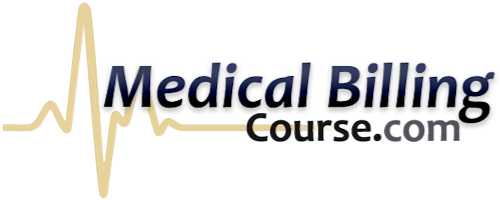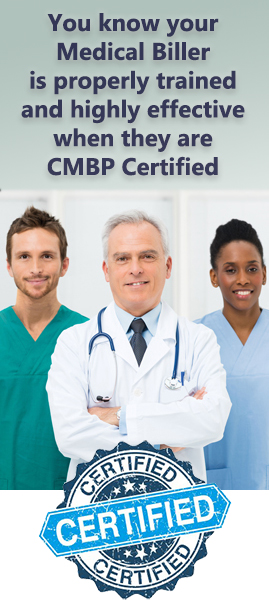- 09/10/2025
- Posted by: Medical Billing Course
- Categories: Medical Billing, Medical Billing Career, Medical Billing Certification, Medical Billing Course, Medical Billing Employment, Medical Billing Jobs

Understanding Medical Billing Terminology for Beginners: Key Terms and Career Insights
Mastering medical billing terminology unlocks career opportunities in a high-growth field that’s projected to expand by 8–9% through 2033. This guide introduces the essential vocabulary—from core billing concepts to coding systems, insurance rules, compliance mandates, and career pathways—so you can confidently navigate claims processing and revenue cycle management. You’ll learn foundational definitions, practical mechanisms, and real-world examples before exploring certification benefits and business applications. At MedicalBillingCourse.com, we provide expert-led training and industry-aligned certification paths that support both career advancement and home-based entrepreneurship. This foundational knowledge is key to understanding medical billing terminology.
Medical Billing and Career Growth
The medical billing field is projected to grow, offering numerous career opportunities. This growth is driven by the increasing complexity of healthcare billing and the demand for skilled professionals to navigate these processes. This expansion creates a need for trained individuals to manage claims and revenue cycles effectively. Understanding medical billing terminology is crucial for success in this expanding sector. According to the U.S. Bureau of Labor Statistics, employment for medical records and health information specialists (which includes medical billers) is projected to grow 8 percent from 2022 to 2032, faster than the average for all occupations.1
“Understanding the nuances of medical billing terminology is the bedrock upon which a successful career in this dynamic field is built. It’s not just about knowing the words; it’s about understanding the processes and how they impact patient care and financial health.” – Tri Smith, Instructor, MedicalBillingCourse.com
Tri Smith is a seasoned instructor at MedicalBillingCourse.com with over 5 years of dedicated experience in educating aspiring medical billing professionals. Throughout his tenure, Tri has guided thousands of students, equipping them with the knowledge and skills necessary to not only understand complex billing terminology but also to excel in their careers and achieve Certified Medical Biller status. His passion for demystifying the intricacies of medical billing and his commitment to student success make him an invaluable asset to the program. A solid grasp of medical billing terminology is his teaching focus.
What Are the Core Medical Billing Terms Every Beginner Should Know?
Core medical billing terms define how healthcare providers request and receive payment. Understanding claims, patient cost-sharing, allowed amounts, and receivables is crucial for accurate reimbursement and cash flow management. For example, a medical claim submits procedure details to an insurer, while deductibles and co-pays determine patient responsibility. Beginning with these terms sets the foundation for efficient billing and revenue cycle optimization. This section is vital for understanding medical billing terminology.
What Is a Medical Claim and How Does It Work?

A medical claim is a formal request submitted by a provider to an insurance payer, detailing services rendered and associated charges. Claims processing leverages standardized codes to verify coverage, calculate payment amounts, and trigger reimbursement. For instance, when a physician performs an office visit, the claim uses CPT and ICD-10 codes to document the procedure and diagnosis—ensuring accurate adjudication and timely payment. This process is central to understanding medical billing terminology.
Here are the key steps in processing a claim:
- Complete patient and provider information accurately to initiate submission.
- Assign appropriate diagnosis (ICD-10) and procedure (CPT/HCPCS) codes for each service.
- Transmit the electronic claim to a clearinghouse or payer for validation.
- Review adjudication results, which detail paid, denied, or pending line items.
- Post payments and address denials through appeals or claim corrections.
These steps establish a straightforward workflow for managing claims resolution and lay the groundwork for patient billing compliance. Effectively understanding medical billing terminology is key here.
How Do Deductibles, Co-pays, and Co-insurance Affect Billing?
Deductibles, co-payments, and co-insurance represent patient cost-sharing mechanisms that influence revenue collection. Deductibles require a fixed annual payment before coverage begins, co-pays charge a set fee per visit, and co-insurance applies a percentage cost share. Understanding medical billing terminology related to patient responsibility is essential.
Patients pay these amounts directly, and billing systems must calculate patient responsibility accurately. Correct cost-sharing computation ensures transparent statements and reduces claim denials tied to incorrect balance billing. This is a critical aspect of understanding medical billing terminology.
What Are the Allowed Amount and Billed Amount in Medical Billing?
The billed amount is the provider’s full charge for services, while the allowed amount is the insurer’s negotiated reimbursement rate. Insurers apply fee schedules or contracted rates to determine the allowed amount, then process payment accordingly. Understanding this difference prevents overbilling and helps reconcile remittance advice against provider charges. This distinction is fundamental to understanding medical billing terminology.
Standard practices include listing both values on patient statements to clarify coverage versus out-of-pocket costs. Next, monitoring accounts receivable aging offers insight into outstanding balances and cash flow health.
How Are Accounts Receivable and Aging Managed in Medical Billing?
Accounts receivable (AR) represent unpaid claims and patient balances, tracked through aging buckets that categorize outstanding amounts by days (e.g., 0–30, 31–60, 61–90+). Aging analysis highlights slow-paying accounts and drives follow-up activities. Effective management of AR is a core component of understanding medical billing terminology.2
Prioritizing aging categories accelerates receipts and reduces bad debt, improving overall revenue cycle performance.
What Are the Fundamentals of Medical Coding in Billing?
Medical coding converts diagnoses, procedures, and services into standardized alphanumeric codes for billing and data analysis. Accurate coding underpins claim validation, compliance with payer rules, and revenue integrity. For example, CPT codes classify medical procedures, while ICD-10 codes describe patient conditions—together they ensure claims reflect the precise care delivered. Understanding medical billing terminology includes a firm grasp of coding.
Importance of Medical Coding
Medical coding is essential for converting diagnoses, procedures, and services into standardized codes. Accurate coding is crucial for claim validation, compliance with payer rules, and maintaining revenue integrity. This process ensures that healthcare providers are correctly reimbursed for the services they provide. This is a key area for understanding medical billing terminology.
– American Medical Association, CPT® Coding and Reporting (2024)
This citation emphasizes the importance of accurate medical coding, which is a fundamental aspect of medical billing, as highlighted in the article. Understanding medical billing terminology requires knowledge of these coding systems.
What Are CPT Codes and Why Are They Important?
- CPT codes facilitate precise billing across diverse services.
- They standardize documentation for audits and quality reporting.
- Proper CPT selection maximizes reimbursement and reduces denials.
Accurate CPT assignments support efficient revenue capture and compliance with payer requirements. This is a vital part of understanding medical billing terminology.
How Do ICD-10 Codes Describe Diagnoses and Procedures?
Integrating ICD-10 with CPT codes forms the backbone of compliant claims submission and clinical documentation. Understanding medical billing terminology means understanding these code sets.
What Are HCPCS Level II Codes and When Are They Used?
- HCPCS codes expand billing scope beyond procedures.
- They ensure proper reimbursement for supplier items.
- Accurate HCPCS use prevents supply-related denials.
Level II coding integrates supply chain management into the revenue cycle process. This is another layer of understanding medical billing terminology.
What Is E/M Coding and How Does It Impact Billing?
- E/M codes drive office visit reimbursements.
- They determine the extent of documentation and audit readiness.
- Proper E/M selection boosts revenue and compliance.
Mastery of E/M guidelines ensures alignment with payer policies and supports higher claim approval rates. This is a specific area within understanding medical billing terminology.
How Do Insurance and Payer Concepts Influence Medical Billing?
Insurance payer concepts dictate claim acceptance, payment responsibilities, and billing workflows. Recognizing plan types, coordination rules, and benefit explanations secures accurate claim adjudication and enhances patient satisfaction. For instance, HMO plans limit network providers, while PPO plans offer broader access at different cost structures. Understanding these payer concepts is crucial for understanding medical billing terminology.
What Are the Different Types of Insurance Payers (HMO, PPO, Medicaid, Medicare)?
How Does Coordination of Benefits (COB) Work in Medical Billing?
- Identify all active insurance plans for a patient.
- Determine the primary payer and submit the claim first.
- Forward the remaining balance to the secondary payer after primary adjudication.
- Reconcile patient responsibility after all carriers have paid.
Effective COB management reduces claims rejections and ensures full reimbursement across payers. This is a key part of understanding medical billing terminology.
What Is an Explanation of Benefits (EOB) and How Should It Be Read?
An Explanation of Benefits is a payer-issued document summarizing claim adjudication, including paid amounts, denials, and patient balances. Key sections include service codes, allowed amounts, payments, and remaining patient responsibility. Reading EOBs accurately refines billing adjustments and informs statement accuracy. This document is central to understanding medical billing terminology.
When Are Prior Authorizations and Referrals Required?
- Submit clinical documentation to justify medical necessity.
- Obtain written approval codes before service delivery.
- Track expiration dates to avoid retroactive denials.
Proactive authorization management prevents service denials and protects provider reimbursement. This is an essential element of understanding medical billing terminology.
What Regulatory and Compliance Terms Should Beginners Understand?
Compliance terms protect patient privacy, prevent fraud, and maintain billing integrity. Regulations like HIPAA and identifiers such as NPI govern data handling and provider recognition. Understanding these mandates ensures ethical, legally compliant billing operations. A deep dive into understanding medical billing terminology must include compliance.
What Is HIPAA and Why Is It Crucial for Medical Billers?
HIPAA is a federal regulation that protects patient health information through privacy and security standards. Compliance requires secure data storage, controlled access, and regular staff training. Enrolling in specialized HIPAA compliance training reinforces secure billing practices and safeguards patient confidentiality. HIPAA is a cornerstone of understanding medical billing terminology.
How Are Fraud, Waste, and Abuse Defined in Medical Billing?
Fraud involves intentional misrepresentation for payment, waste signifies inefficient practices, and abuse denotes excessive or unnecessary billing. Preventing these risks depends on accurate documentation, regular audits, and ethical coding practices. Vigilant oversight reduces legal exposure and maintains payer trust. Understanding these concepts is vital for understanding medical billing terminology.
What Is the National Provider Identifier (NPI) and Its Role?
The NPI is a unique 10-digit identifier assigned to healthcare providers for administrative and billing transactions. Using NPIs on claims ensures accurate provider recognition and streamlines electronic data interchange, reducing processing delays and enhancing payment reliability. The NPI is a key piece of understanding medical billing terminology.
Key Medical Billing Terms and Career Opportunities for Beginners
Medical billing terminology not only informs daily tasks but also shapes career advancement and business strategy. Certification validates expertise, software proficiency drives efficiency, and entrepreneurial skills enable home-based practice. Mastering these terms accelerates professional growth and revenue generation. A comprehensive understanding of medical billing terminology opens many doors.
What Is Medical Billing Certification and Why Is It Important?
Medical billing certification demonstrates proficiency in industry-standard procedures, coding guidelines, and compliance rules. Certified professionals report higher earning potential—often 20–30% above non-certified peers—and greater job security. Accelerate your credentials with our Certified Medical Biller Program designed by industry experts. Certification is a testament to your understanding of medical billing terminology.
What Are Common Medical Billing Software Terms Beginners Should Know?

- Clearinghouse – An intermediary that validates and forwards claims.
- Remittance Advice (RA) – Electronic explanation of payment details.
- Practice Management System – Integrated platform for scheduling, billing, and reporting.
- Electronic Health Record (EHR) – Digital patient chart used for coding and documentation.
Familiarity with these terms streamlines system navigation and enhances productivity. This software knowledge is part of understanding medical billing terminology.
How Can You Start a Home-Based Medical Billing Business?
- Register as a sole proprietor and obtain required licenses.
- Invest in billing software and secure data handling protocols.
- Define service packages (claims processing, denial management).
- Market to medical practices and establish payer enrollments.
Our Home-Based Billing Entrepreneurship Course guides you through each phase, from setup to client acquisition. This course emphasizes understanding medical billing terminology for business success.
What Are the Typical Job Roles and Responsibilities of a Medical Biller?
- Claims Submission – Prepare and send accurate claims.
- Denial Management – Investigate and appeal claim rejections.
- Patient Billing – Generate statements and handle inquiries.
- Reporting – Analyze AR aging and revenue cycle metrics.
These roles demand strong attention to detail and practical communication skills. Excelling in these roles requires a firm grasp of medical billing terminology.
What Are Common Questions Beginners Have About Medical Billing Terms?
Beginners often seek clarity on priority terms, code differences, denial causes, and emerging trends. Addressing these questions builds confidence and reduces onboarding time for new billers. This FAQ section helps with understanding medical billing terminology.
What Are the 5 Most Important Medical Billing Terms to Learn First?
- Medical Claim – The submission for payment.
- CPT Code – Procedure classification.
- ICD-10 Code – Diagnosis description.
- Allowed Amount – Insurer’s payment rate.
- Deductible – Patient’s initial cost share.
Mastering these terms accelerates accurate billing from day one. These are the foundational elements of understanding medical billing terminology.
How Do CPT Codes Differ from ICD-10 Codes?
CPT codes identify medical procedures, while ICD-10 codes classify patient diagnoses. Combining both ensures comprehensive claim documentation and enables payers to validate medical necessity and procedure accuracy. This distinction is crucial for understanding medical billing terminology.
What Causes Claim Denials and How Can They Be Managed?
Claim denials arise from incorrect codes, missing authorizations, or billing outside network rules. Managing denials involves:
- Reviewing denial reasons.
- Correcting and resubmitting claims.
- Implementing prevention strategies, such as pre-submission audits.
Efficient denial management recovers revenue and refines billing processes. This is a practical application of understanding medical billing terminology.
How Does AI and Automation Affect Medical Billing Terminology?
AI and automation streamline repetitive tasks like code selection, claim scrubbing, and denial analysis. Intelligent tools learn from patterns to suggest accurate codes, reducing manual errors and accelerating reimbursement cycles. This technological shift impacts how we approach understanding medical billing terminology.
How Can Understanding Medical Billing Terms Improve Your Career Success?
A profound grasp of billing terms positions you as a skilled professional capable of optimizing revenue cycles, reducing denials, and advising on practice management. Mastery of terminology translates directly to better job performance and career growth. Investing time in understanding medical billing terminology is investing in your career.
How Does Mastery of Billing Terms Lead to Better Job Opportunities?
Proficiency in billing vocabulary demonstrates expertise in claims adjudication, compliance, and financial reporting—qualities that employers seek for specialized roles and leadership positions. This expertise is built upon a solid foundation of understanding medical billing terminology.
Why Is Certification Linked to Higher Salary and Job Security?
Certified billers command higher salaries—often 10–20% above industry averages—and enjoy greater job stability. Certification verifies up-to-date knowledge of coding updates, payer protocols, and regulatory standards. This credential signifies a deep understanding of medical billing terminology.
How Can Our Medical Billing Course Help You Learn These Terms?
Our comprehensive training integrates interactive lessons, real-world case studies, and expert mentorship to reinforce terminology through practice. Enroll in the Certified Medical Biller Program to gain confidence and credentials that set you apart. Our program is designed for a practical understanding of medical billing terminology.
Hear From Our Successful Graduates!
Discover how our comprehensive training has transformed the careers of individuals just like you. Read inspiring stories of success and learn how you can achieve your professional goals in medical billing.
“The medical billing terminology was initially overwhelming, but the structured approach at MedicalBillingCourse.com broke it down into manageable concepts. I now feel confident in my ability to navigate complex claims and understand the revenue cycle.” – Sarah K., Certified Medical Biller
Mastering these terms empowers you to drive efficient billing operations and secure thriving career or business opportunities in the medical billing industry. Continuous learning and certification remain key to long-term success and financial growth. A commitment to understanding medical billing terminology is paramount.
1 U.S. Bureau of Labor Statistics, Occupational Outlook Handbook, Medical Records and Health Information Specialists. Retrieved from (https://www.bls.gov/ooh/office-and-administrative-support/medical-records-and-health-information-specialists.htm)
2 Healthcare Financial Management Association (HFMA), Revenue Cycle Management Best Practices. Retrieved from (https://www.hfma.org/revenue-cycle-management/)

